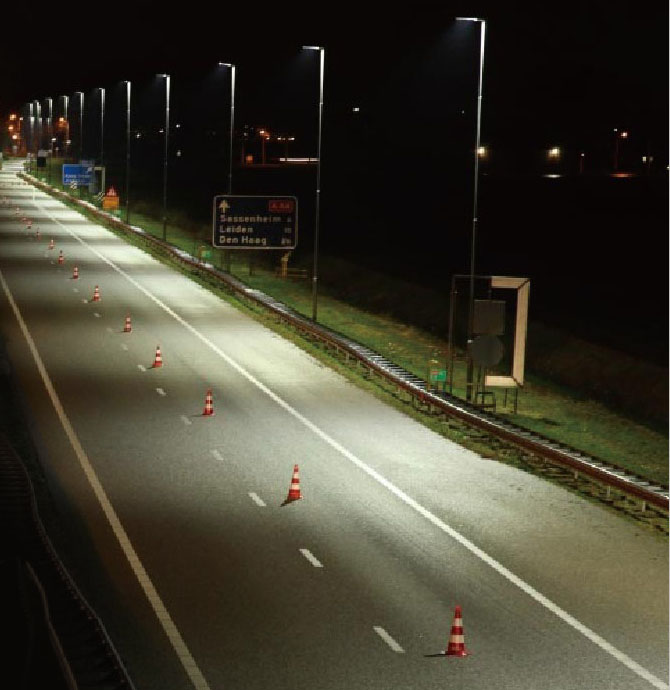|
LED street lighting
|
|
|
|
|
|
Eliminate grey-yellow haze, switch on the KTL LEDs!
Since their appearance, LED street fixtures have come a long way in technological development. The first generation LED fixtures with their significant theoretical benefits (such as long service time and high colour rendering index), at the same time had the essential shortcomings which limited their use: 1. Relatively low luminous efficiency (lower than 79 lm/W) of LED fixtures did not allow them directly compete with high-pressure sodium-vapour lamps. At the same road illumination, power consumption was comparable, despite a very different nature of LED lighting in terms of its quality. 2. Low luminous efficiency imposed limitations on design and maximum power of LED fixtures. To change gas-discharge lamps, tens and even hundreds high power LEDs were required. The overall size, weight and cost of a cooling system significantly limited use of such devices. In fact, the first generation LED fixtures used only in spots where servicing was difficult or unreachable. 3. A small selection and low reliability of power supply sources (affordable) made it difficult to achieve well-publicized by journalists 100,000-hour service time of LEDs. Because of absence of drivers with the required parameters (powerful high-voltage sources), LEDs were frequently connected in series and parallel. That in turn, resulted in an uneven current distribution and chain-reaction burnouts of LEDs due to different thermal regime and initial variations in V-I characteristics. 4. The spatial radiation pattern (light intensity curve) did not have anything in common with the radiation pattern required by the existing standards and norms.  7-km section of the motorway in Amsterdam is equipped with Phillips SpeedStar fixtures. This LED lighting has quite noticeable unevenness. 5. Besides all above-mentioned problems, the main shortcoming of LED street fixtures remained their price. Many demanding clients preferred expensive foreign fixtures on the base of metal halogen high pressure lamps which generated a high-quality white light with high colour rendering (Ra) 80-98. Modern LED street fixtures free of most of the above-mentioned shortcomings. While there is still insignificant superiority in luminous efficiency (lm/W), LED fixtures generate much more light energy in watt distributed on the whole visible spectrum. [more information on lumens and watts] Effect of LED lighting is visible by an unaimed eye - at the same, comparing with sodium fixtures, illumination in luxes, lit objects look more contrast, natural and detailed. Sodium gas-discharge lamps are still used for street lighting, generating a yellow light in a narrow segment of spectrum and perform their functions such as lighting of road markings, road signs and outlines of road users. Chances of survival for a pedestrian crossing a road when it is dark especially in bad weather conditions, depend directly on colour and reflectance of clothes, as under sodium lamp all colours except yellow, seem gray. That is why a driver shall wear a special yellow or orange reflective jacket when leaving the car which is stopped on a road or a roadside, at a night time or in low visibility conditions. There is no doubt that a prohibition of use of sodium gas-discharge lamps for illumination of streets and roads is only a question of time. The only reason why today sodium lamps are dominating on streets is too high price of alternative fixtures. However, there is an alternative. In 2012 KTL developed and launched mass production of the power LED for street fixtures, equipped with the unique primary optics and designed for lighting of highways, streets and roads in according to the existing standards and norms. At the present, it is the only LED in the world which allows to make assembly process of LED modules fully automated, and to reject an expensive secondary optic system which in addition sharply reduces the efficiency of the fixture. Eliminating the use of manual labour and substantial simplifying the design of LED street fixtures are the key factors which enable manufacturers not only competitive advantages in the LED product market, but also to reduce the cost of fixtures to the level of a conventional gas-discharge light. |
|
